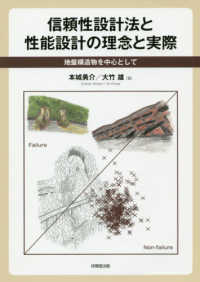- ホーム
- > 洋書
- > 英文書
- > Science / Mathematics
Full Description
As a consequence, implementation and running costs of modem manufacturing systems are drastically increasing, whereas their fields of application remain limited, and every day become even narrower, which increases the risk of early obsolescence.







